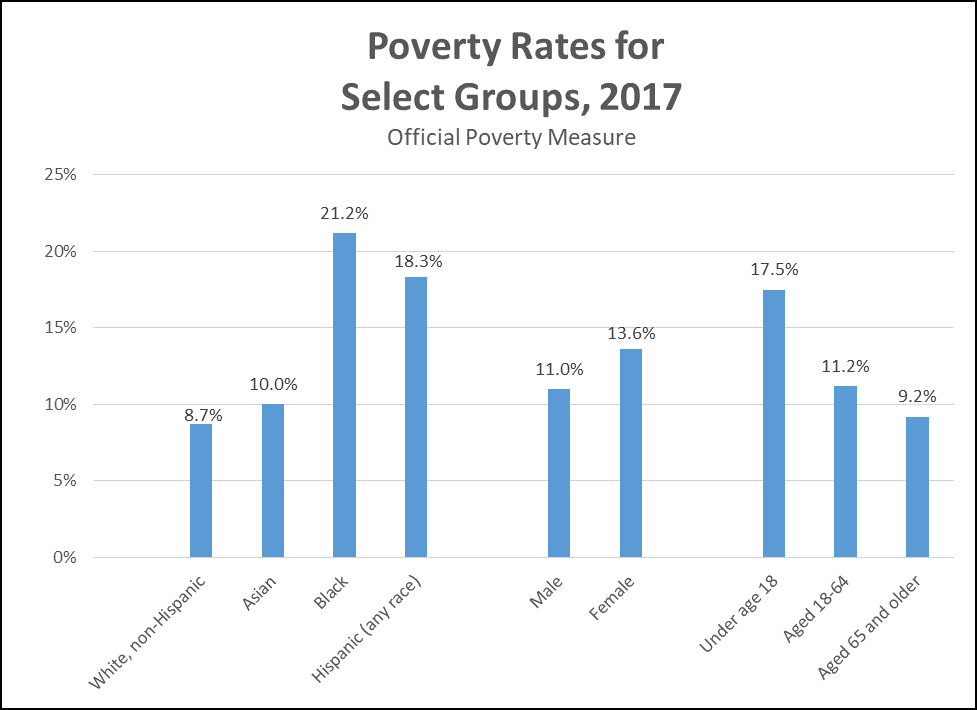(September 12, 2018)—Today, the U.S. Census Bureau released data on income, poverty, and health insurance coverage in 2017, as the Trump administration and members of Congress deliberate over policies that will restrict access to crucial income and work supports for immigrants as well as people born in the United States. The new data reveal that despite rising corporate profits and strong economic growth, average working people have seen only modest wage gains, and there was no statistically significant decline in the number of people in poverty. While there was a statistically significant decline in the overall poverty rate, there was no decline in the poverty rates for children and many other groups including for African American families, people who live in the South or Midwest, and naturalized citizens, among others. According to the official poverty measure, 39.7 million people lived in poverty in 2017—12.3 percent of all people in the United States. As in previous years, women, children, and people of color were more likely to be living in poverty than males, adults, and White, non-Hispanics. Notably, as the administration prosecutes a multi-front attack on immigrant communities, immigrant families are more likely to be living in poverty than non-immigrant families: 14.5 percent of foreign born people (both naturalized citizens and noncitizens) are living in poverty, compared to 11.9 percent of native-born people.


Public policy mitigates the effects of poverty for millions of Americans, but the data reveal troubling realities, particularly for immigrant families. For the last year, community leaders have been reporting that immigration enforcement measures and planned changes to how the administration defines “public charge” have led to drops in enrollment in Supplemental Nutrition Assistance Program (SNAP), public health insurance (e.g., Medicaid and CHIP), and early care and education programs among immigrant families.
The data show that immigrant families are less likely to have health insurance: 83.2 percent of foreign-born people had health insurance in 2017, compared to 92.5 percent of people born in the U.S.
The data also reveal that immigrants are more likely to be living in poverty than people born in the U.S. when one takes into account the value of public benefits, including SNAP, school lunches, housing assistance, and tax credits such as the Earned Income Tax Credit (EITC)—presumably because they are less likely to access these benefits. According to the Supplemental Poverty Measure (SPM) released today, which policymakers believe is a better measure of poverty because it takes into account these benefits and also deducts the costs of necessary expenses, 20.8 percent of foreign born people were living in poverty, compared to 12.8 percent of people born in the U.S. Starker disparities are revealed when looking at the poverty rates of foreign born noncitizens, who are most likely to be worried about accessing public benefits in the current political climate. Using the 2017 SPM, noncitizens were nearly twice as likely to be living in poverty as people born in the U.S., at 25.1 percent and 12.8 percent respectively.
The data released by the Census Bureau today highlight the need for policies to ensure broad-based economic growth improves the circumstances of lower and middle-income Americans, and especially of people of color and immigrants who are systematically denied opportunities and supports. Rather than make it more difficult for families to access the supports they need, we need to embrace our diversity as a nation and ensure that all children and families have access to services that will mitigate the effects of poverty and allow them to achieve economic sustainability.
###